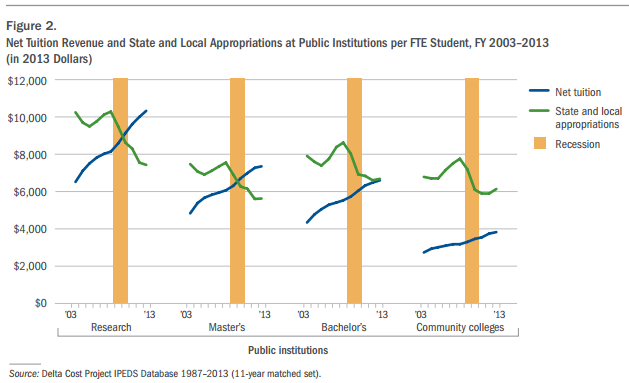With Kirk Heffelmire
The rate of degree production and the cost per degree at public institutions both improved over the past decade. This means that universities are helping students better complete their studies and are doing so more efficiently.
These data come from a recent report from the Delta Cost Project summarizes the financial position of colleges and universities in terms of the money they collect, money they spend, and the outcomes produced. The Delta Cost Project is a research program dedicated to understanding and reporting the financial position of colleges and universities. Their recent report covers 2003 to 2013, which provides a useful comparison from before to after the recession.
Source: Delta Cost Project, (2016), “Trends in College Spending: 2003–2013.”
Unfortunately, the report also provides further evidence of the public disinvestment in higher education. Although state and local funding rebounded slightly in the last year covered by the report, appropriations for public research universities declined by 28 percent in the years after the recession. (See the figure below for the relationship between public support and tuition.) Students and their families are left to carry the increased burden created by declining public support. At public universities, the share of educational expenses supported by net tuition increased from 43.9 percent to 62.4 percent between 2003 and 2013.
Overall, the financial position of higher education shows signs of improvement since the recession, but the shift of costs from public to private sources remains as states have divested from higher education.
(For a comparison of Virginia to other states, check out our prior post.)
